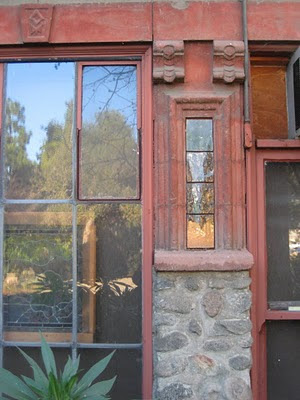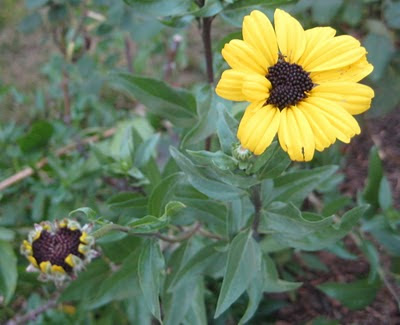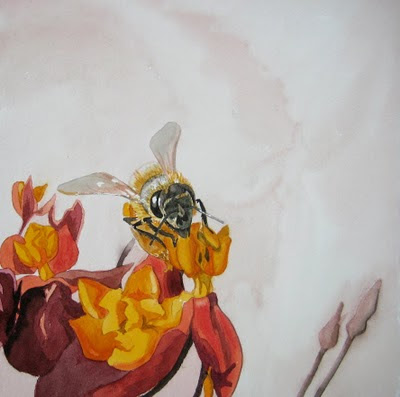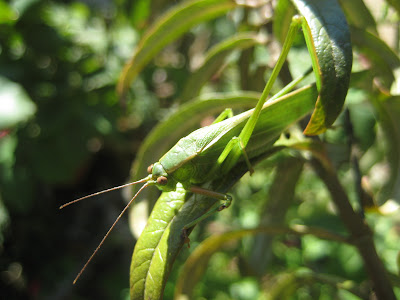My mother painted. My great aunt, my father's Aunt Gertrude, painted. My mother was an advertising copy writer who took up painting as her children started school and became independent. I believe she painted as a youngster as well, because some years ago she gave me a child's book about watercolor painting which her father had inscribed to her. As for Aunt Gertrude, I didn't even know she painted until I was cleaning out my parents house. She was very old when I was very young. She was a retired teacher who brought us books; we stayed at her San Diego home once. She seemed kind of wonderful, but also frightening. There's the story about the maple sugar candy.
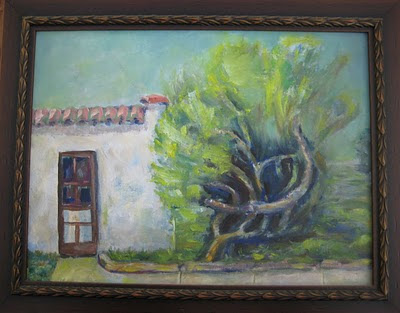
This is my mother's painting of our old backyard. The door is to my father's workshop adjacent to the garage. The tree is transplanted, only for the painting, from the left side of the front yard. I don't really recall my mother painting it, but I would guess it was in the 1970s. I like the green shadows on the tile roof, but really I love this painting because it has memories of both my parents and the old house all rolled into one.

This, also by my mother, I think is an earlier painting. We had a magnolia tree on the parkway strip in front of our house. I think I'd like to paint magnolias myself sometime; they are fascinating flowers with great shadows. I'm also particularly fond of blue pottery.

This is signed by my Great Aunt Gertrude. On the back of this painting is written "1930 Windy Day" and on the back of the frame, "No. 58 Torrey Pines" It looks like the frame was originally wired to hang vertically, so perhaps this isn't Torrey Pines. I think the trees are eucalyptus. The frame is obviously hand carved; I wouldn't be surprised if Aunt Gertrude made the frame too.

On the back of the dish, painted in a fine careful hand is "GE to AEF 1916." Alice Evans Field was my paternal grandmother. 1916 would have been right around the time she married my grandfather.
I didn't take dancing lessons as a child. My lack of physical grace should be readily apparent. I didn't take piano. I had art classes early on. There was one class I was almost too young to remember at the Pasadena Museum, which is now the Pacific Asia Museum. It was a modern art museum then, and I think the class was an uninstructed workshop with buckets of paint and boards to paint on. I painted two by fours. There was another class given by Mavis (last name forgotten) who owned Mission Art Supplies at its former location; we made pastel drawings of the San Gabriel Mission. My parents encouraged my creative flair. The things I remember impressed them most were these: I could make circles on my Etch-a-Sketch; I could draw Alvin (the chipmunk) from memory, and I did a drawing of a little girl with her Christmas presents that showed her face turned down and her head foreshortened in an apparent attempt at accuracy. I think my parents just loved art and people who tried to make it.




